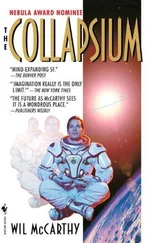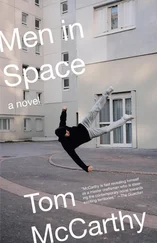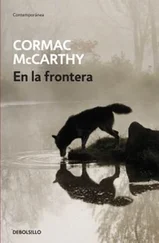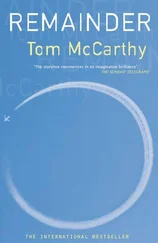The sun, although at Serge’s back now, bounces off the top wing’s underside to light up his little cabin. Once more the kite balloon, its occupant now busy talking on his phone line; then a mandala of small roads and pathways, at least half of them unusable, criss-crossing and looping over open ground; then rows of empty trenches-last month’s, or last year’s, the year before’s; more open ground; more tracks. It’s only when the tracers start to rise towards him that Serge realises he’s passed onto the German side. It’s always like that: on his first few outings he’d anticipate the moment when he’d move across the deadly threshold, bracing himself for it, as though there were a real line strung across the air like a finishing ribbon for the machine to thrust its chest against and breach. But that moment never came-or rather, turned out always to have come already, the threshold to have lain unmarked, been glided over quite unnoticed. Even looking down, it’s hard to see which are the front positions: trench after trench slides into view, parallel lines conjoined in places by small runnels as communication trenches link up with evacuation trenches, third-line and supply trenches… At times the network opens into a wide mesh; at others it closes up, compact. The tracers rising from it lend structure to the air, mesh it as well. Puff balls of smoke appear as if by magic all round the machine.
“Archie pretty light today,” Gibbs leans back and shouts into his ear, quite nonchalantly.
A German kite balloon emerges from beneath their tail. Serge thinks about strafing it, but sees that it’s being hurriedly winched down out of his range. It rises again as he draws away from it-strangely elongated, like a floating intestine. He unfolds his map and, holding it across his knees, runs his finger to the square in which the first hostile battery position’s marked out: should be about here… He taps Gibbs’s shoulder again and signals for him to fly in a square holding pattern. As Gibbs turns, then turns again, patrolling their small area’s boundaries, Serge can see the machines to his left and right describing the same patterns half a mile away. He looks down and, moving his eyes first in diagonals from corner to corner of his quadrant, then in smaller, darting cat’s cradles between landmarks, picks up the battery, secreted within a copse but nonetheless betrayed by the anachronistically autumnal patch of scorched and thinned-out leaves made by its discharges. He picks his spark set up again and taps in C3E, then A, then MX12, the target’s map coordinates. Then he signals to Gibbs to fly back to their side.
Travelling in this direction, the tracer fire appears only after it’s already passed the plane, cutting long, slanted corridors into the air above him. It tilts up vertical, then starts angling forward, managing, through some optical and geometric sleight of hand, to reverse its direction without altering its flow until it’s rising at him from the ground. The intestinal kite balloon’s down again, then up; the magic puffs materialise beside them; the front line slides by unperceived once more, revealing in its wake a mesh of interlocking trenches which the same old English kite balloon announces as their own. The pockmarked village, road and woods run past below them one more time, then they’re back above Battery E. One of the Popham strip’s white lesser-than lines has been removed, the other straightened and lowered to the backbone cloth’s base, joining it at a right angle to form an L. Serge points Gibbs back towards the lines again, sending down A signals from his spark set as they go.
They’re back above their target with three minutes to spare. The other machines are in position too: two to the north of him, one to the south, each marking out its assigned grid square, while a fifth machine moves up and down in long, straight lines behind them. It reminds Serge of a ritual he once saw illustrated in Boy’s Comic Journal: a ceremonial Red Indian dance to call down rain. The men in feathers marked their patterns out across the ground and the gods, summoned into action by these, sent down water. As the second-hand needle moves across the final quarter-segment of his watch’s face, Serge feels an almost sacred tingling, as though he himself had become godlike, elevated by machinery and signal code to a higher post within the overall structure of things, a vantage point from which the vectors and control lines linking earth and heaven, the hermetic language of the invocations, its very lettering and script, have become visible, tangible even, all concentrated at a spot just underneath the index finger of his right hand which is tapping out, right now, the sequence C3E MX12 G…
Almost immediately, a white rip appears amidst the wood’s green cover on the English side. A small jet of smoke spills up into the air from this like cushion stuffing; out of it, a shell rises. It arcs above the trench-meshes and track-marked open ground, then dips and falls into the copse beneath Serge, blossoming there in vibrant red and yellow flame. A second follows it, then a third. The same is happening in the two-mile strip between Battery I and its target, and Battery M and its one, right on down the line: whole swathes of space becoming animated by the plumed trajectories of plans and orders metamorphosed into steel and cordite, speed and noise. Everything seems connected: disparate locations twitch and burst into activity like limbs reacting to impulses sent from elsewhere in the body, booms and jibs obeying levers at the far end of a complex set of ropes and cogs and relays. The salvos pause; Serge plots the points of impact on his clock-code chart, then sends adjustments back to Battery E, which fires new salvos that land slightly to the north of the first ones. Each one’s fall draws from the wood a new yellow-and-red flame-flower, with an outer white smoke-leaf that lingers after the bloom has faded. Serge sends one more correction; the shells shift fifteen or so yards to the east, and start arriving in regular fifteen-second bursts, their percussions overlapping with those falling in the neighbouring zones in sequences that speed up and slow down, like church bells’ chimes. A larger, darker bloom erupts from the copse beneath him: it seems to have more volume to it, more mass, billowing out and upwards like a dense, black chrysanthemum…
“I think we got it,” Serge turns round and shouts to Gibbs.
Gibbs points to his ear and shakes his head. Easier to communicate with the ground than with the man in the machine beside you. Serge sends an OK down to Battery E, then signals to Gibbs to move on to Battery F. They fly back across the lines and find this in the ruins of a village, Popham strips K’d up in response to their B sigs. They fly back again; Serge ranges the guns, plots the shells’ points of impact on his clock-code chart; then they move on to Battery G and do the same. Each time they shuttle to and fro, they pass through residues of tracer, Archie smoke and their own exhaust fumes hanging in the air. The shapes made when trails intersect, lines cutting across other lines at odd angles or bisecting puffballs’ circles to form strange figures, remind Serge of the phonetic characters his father would draw across the schoolroom’s whiteboard, the way the sequences would run and overlap. The lower section of this board’s become so crowded that it’s half-occluded: the morning’s light vapour blanket’s thickened to an opaque shawl. They have to fly lower to see where shells are landing, or even to get their own bearings. At one point a howitzer shell appears right beside them, travelling in the same direction-one of their own, surfacing above the smoke-bank like a porpoise swimming alongside a ship, slowly rotating in the air to show its underbelly as it hovers at its peak before beginning its descent. It’s so close that its wind-stream gently lifts and lowers the machine, making it bob. Serge knows that planes get hit by their own shells, but this one seems so placid, so companionable-and besides, if they’re travelling at the same speed then both it and they are just still bodies in space, harmless blocks of matter. In the instant before their paths diverge, it seems to Serge that the shell and the plane are interchangeable-and that the shell and he are interchangeable, just like the radians and secants on his clock-code chart, the smoke-and-vapour-marked points and trajectories around him, the angles of his holding pattern’s quadrant and the Popham strips’ abrupt cloth lines. Within the reaches of this space become pure geometry, the shell’s a pencil drawing a perfect arc across a sheet of graph paper; he’s the clamp that holds the pencil to the compass, moving as one with the lead; he is the lead, smearing across the paper’s surface to become geometry himself…
Читать дальше












